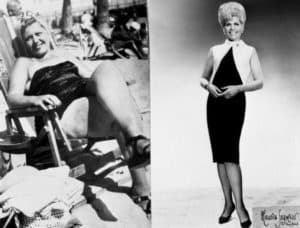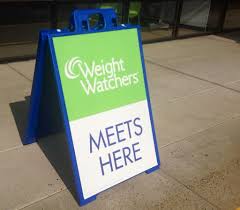In 1961 Jean Nidetch, an overweight housewife from Queens, New York, invited some friends over and admitted that she was obsessed with eating cookies. Although she managed to lose 20 pounds, Jean felt a lack of motivation to continue. She called up some friends and invited them over, yet again, to share their weaknesses. There began a weekly support group as the women worked together to lose weight. As the word spread, Jean found that she could no longer host in her apartment. With the help of her friends Albert and Felice Lippert, Jean was setting up meetings at local business centers.
These support groups proved to be popular and in 1963 Weight Watchers became a company. With only word of mouth advertising, Jean discovered more than 400 people waiting for her first meeting after becoming incorporated. The company expanded as members of the groups who had successfully completed the program began to open franchises throughout the U.S. and abroad.
In 1978 an exercise plan was added to the Food Plan, making Weight Watchers one of the first organizations to stress the importance of regular, moderate exercise in addition to dieting.
In 1978 the company was sold to H.J. Heinz Company. Weight Watchers is publicly traded on the NYSE under the ticker symbol: WTW
A 2015 systematic review found that, after 1 year, those who used Weight Watchers lost 2.6% more weight than those who were in the control group.
In 2018, the company announced a major change to their Smartpoint system with Flexpoints, a low carb eating plan that allows members unlimited amounts of more than 200 foods. 
Today Weight Watchers operates in 30 countries worldwide. The core philosophy behind the company is a science-driven approach to help participants lose weight by forming healthy habits, eating better, and getting exercise, all with the support of other members. Weight Watchers has 25,000 employees and had $1.724 billion in revenue in 2013.
Weight Watchers
In 1961 Jean Nidetch, an overweight housewife from Queens, New York, invited some friends over and admitted that she was obsessed with eating cookies. Although she managed to lose 20 pounds, Jean felt a lack of motivation to continue. She called up some friends and invited them over, yet again, to share their weaknesses. There began a weekly support group as the women worked together to lose weight. As the word spread, Jean found that she could no longer host in her apartment. With the help of her friends Albert and Felice Lippert, Jean was setting up meetings at local business centers.
History
These support groups proved to be popular and in 1963 Weight Watchers became a company. With only word of mouth advertising, Jean discovered more than 400 people waiting for her first meeting after becoming incorporated. The company expanded as members of the groups who had successfully completed the program began to open franchises throughout the U.S. and abroad.
In 1978 an exercise plan was added to the Food Plan, making Weight Watchers one of the first organizations to stress the importance of regular, moderate exercise in addition to dieting.
In 1978 the company was sold to H.J. Heinz Company. Weight Watchers is publicly traded on the NYSE under the ticker symbol: WTW
A 2015 systematic review found that, after 1 year, those who used Weight Watchers lost 2.6% more weight than those who were in the control group.
In 2018, the company announced a major change to their Smartpoint system with Flexpoints, a low carb eating plan that allows members unlimited amounts of more than 200 foods. 
Today Weight Watchers operates in 30 countries worldwide. The core philosophy behind the company is a science-driven approach to help participants lose weight by forming healthy habits, eating better, and getting exercise, all with the support of other members. Weight Watchers has 25,000 employees and had $1.724 billion in revenue in 2013.


